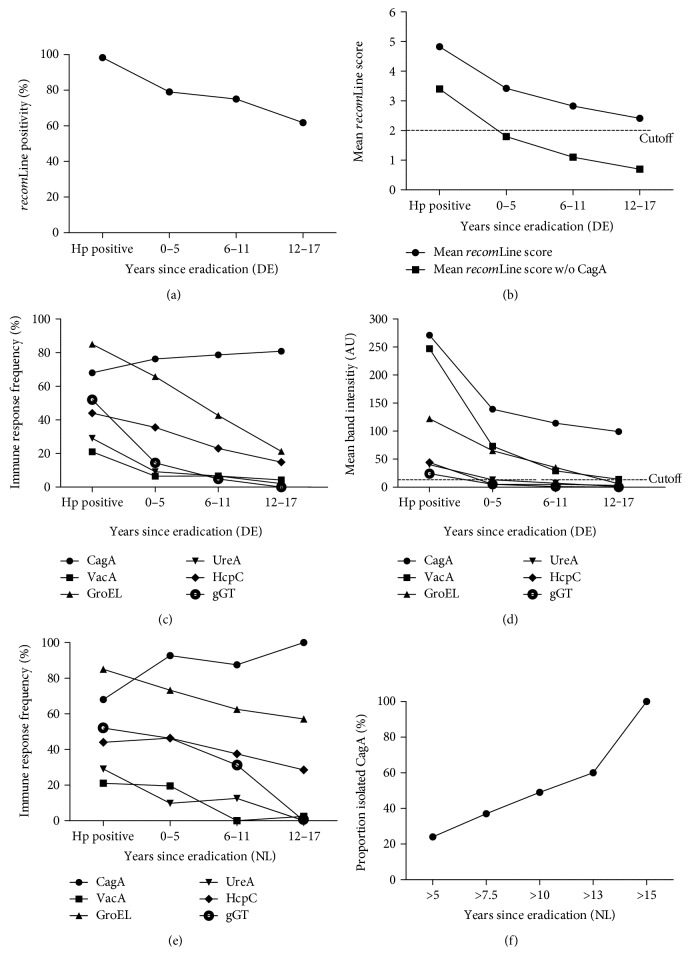Figure 1.
recomLine test results from patients without and with eradication therapy. (a) recomLine positivity, (b) mean recomLine score, (c) immune response frequency, and (d) mean immune response intensity of individuals with an active ongoing H. pylori infection (nHp positive = 402) compared to individuals having received antibiotic treatment in the past (nyears since eradication = 210), indicated as years since eradication and grouped (0–5, 6–11, and 12–17 years) analysing a German cohort (DE). Moreover, the relationship between (e) immune response frequency to individual antigens (●CagA, ■VacA, ▲GroEL, ▼UreA, ♦HcpC, and ○gGT) and (f) percentage of isolated CagA immune response and the time since eradication therapy analysing a Dutch cohort (NL) (n = 65). While the immune response for all antigens tested declines after eradication, the response towards CagA antibodies persists over a long period, resulting in an isolated CagA positivity, which remains above cutoff and is significantly increased (p < 0.01) in the 12–17 years group compared to all other antigens.

